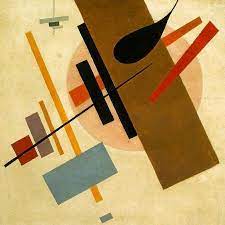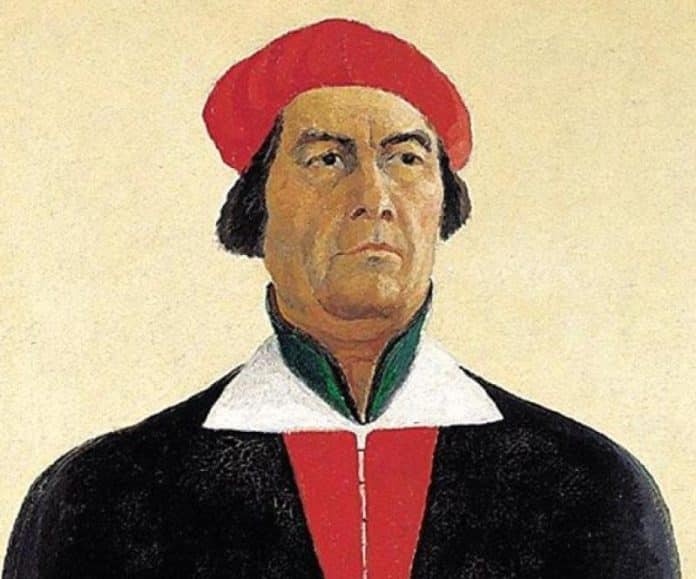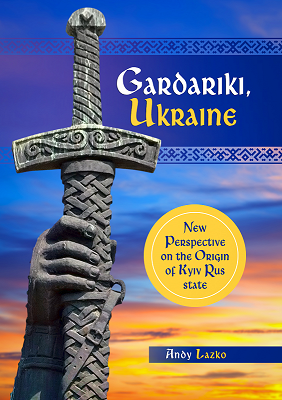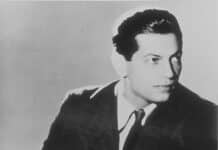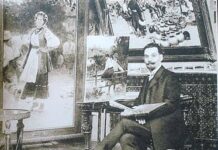Kazimir Malevich, an artist of Polish descent, was born in Ukraine on Feb. 23, 1879. His father was Polish, director of sugar refineries. The surname Malevich is common in Ukraine, Poland, Lithuania, and Belarus. In his Boston-published ‘Avant-Garde Art in Ukraine’, M. Shkandrij states that Malevich’s “autobiographies represent an important key to understanding his work and provide reference points for many events in his life. Since the longer of the two [autobiographies] was written near the end of his life, it was conceived with the purpose of presenting a final retrospective and guide to his entire development. These writings focus heavily on his early life in Ukrainian villages and small towns and explain his debt to the icon and folk arts… Malevich’s celebration of the village and aversion to factory life might come as a shock to readers more familiar with his Moscow and Petersburg periods. This validation of his early life presents some difficulties for biographers and critics alike. In the 1933 text, Malevich describes his earliest memories of sugar-beet plantations in Ukraine, where his father worked as an assistant director and a sort of technical engineer… The autobiography describes his earliest impressions, which are of young women in colorful dress working enormous fields. Thousands of acres required cultivation by thousands of people in order to supply the sugar refineries. He contrasts the beauty of the land and peasant life with the ugliness and oppressive nature of factory existence. In this way Malevich describes his childhood as a psychological transformation, a “going native” that results in an almost complete identification with the peasantry. He spends half the narrative describing how this process occurred: “I imitated the entire life of the peasants. I rubbed the bread crust with garlic, ate fat back while holding it in my fingers, ran barefoot and refused to wear shoes” (Vakar and Mikhienko, 20). He marvels at the way the peasants make their own clothes, dress up “in colorful patterns” for special occasions, engage in dignified ceremonies and rituals, such as the custom for a bride and bridesmaids to travel through the village solemnly inviting families to the planned wedding. However, it was not simply the food, dress and customs that thrilled the young Malevich. The autobiography makes clear that his contact with the peasantry imprinted him with an aesthetic. He thought of village people as “clean and well dressed” (chistymi i nariadnymi), two adjectives that become shorthand for his description of the qualities he admired in art (Vakar and Mikhienko, 20). At the end of his description of life in the countryside, he emphasizes that his sympathies for the village lies above all in the way the people practiced art: “I watched with great excitement how the peasants made wall paintings, and would help them cover the floors of their huts with clay and make designs on the stove. The peasant women were excellent at drawing roosters, horses and flowers. The paints were all prepared on the spot from various clays and dyes. I tried to transfer this culture onto the stoves in my own house, but it didn’t work. They told me I was making a mess, so I worked on fences, barn walls, etc.” This, concludes the author, “was the background against which the feeling for art and artistry [khudozhestvu] developed within me” (Vakar and Mikhienko, 20)…
Awareness of the city’s art came gradually, first through pictures seen in shop windows in Kyiv, then through a meeting with the painter Mykola (Nikolai) Pymonenko, whose works made a powerful impression on him. On many of the easels he saw in Pymonenko’s studio, he informs, “stood pictures representing life in Ukraine” (Naiden and Horbachov, 25). Pymonenko taught in the Kyiv School of Drawing, to which Malevich applied and which he may have visited in 1894–96 (Naiden and Horbachov, 25). It was at this time that he decided to become a painter. Charlotte Douglas has noted that Pymonenko’s subjects, “drawn from rural life—villagers at work, haying scenes, and full-length portraits of peasants—later became Malevich’s own” (Douglas 1994, 8). One of Malevich’s most famous late paintings from 1930, The Flower Girl, recalls the eponymous work by Pymonenko and was conceived, no doubt, as a way of paying homage to the older painter…
Underlining painter Kvachevskyi’s Ukrainian background, Malevich says the following: “Lev Kvachevskyi was my very best friend. We couldn’t live without each another […] Every day in summer, spring and winter we’d walk thirty versts for our sketching sessions […] While we ate we’d discuss various matters, or reminisce about Ukraine. We were both Ukrainians” (Vakar and Mikhienko, vol. 1, 26).
In 1928, Malevich returned to Kyiv and on finding a supportive environment, made a point of identifying himself as a Ukrainian. “His younger sister Victoria (married name Zaitseva) recalled that he always recorded his nationality as Ukrainian on official documents, and insisted that other family members should do the same (Naiden and Horbachov 1993, 221)”.
It is telling that when translations of the 1933 autobiography were first published, the sections dealing with the painter’s early life and his Ukrainian connections were sometimes omitted, (like both in the Upchurch translation (Malevich 1985) and in the version published in Kazimir Malevich 1990).
Tetiana Filevska’s volume published in 2016 made available Malevich’s Ukrainian-language articles, minutes of meetings, exhibition catalogue, four previously unpublished articles, and notes taken during Malevich’s seminars. The materials were found in 2015 in the personal archive of Marian Kropyvnytskyi, Malevich’s assistant during the time he worked in Kyiv
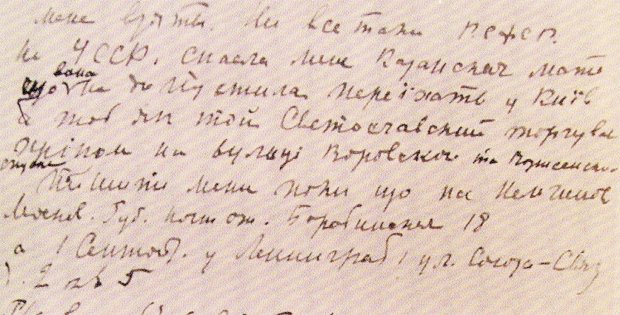
In 1915, Malevich changed the future of Modern art with his innovation he called Suprematism. It was the art of pure geometric form, the art of pure abstraction. Malevich’s most famous Suprematist masterpiece is The Black Square. The artist’s comment on the Black Square was “It is from zero, in zero, that the true movement of being begins.”
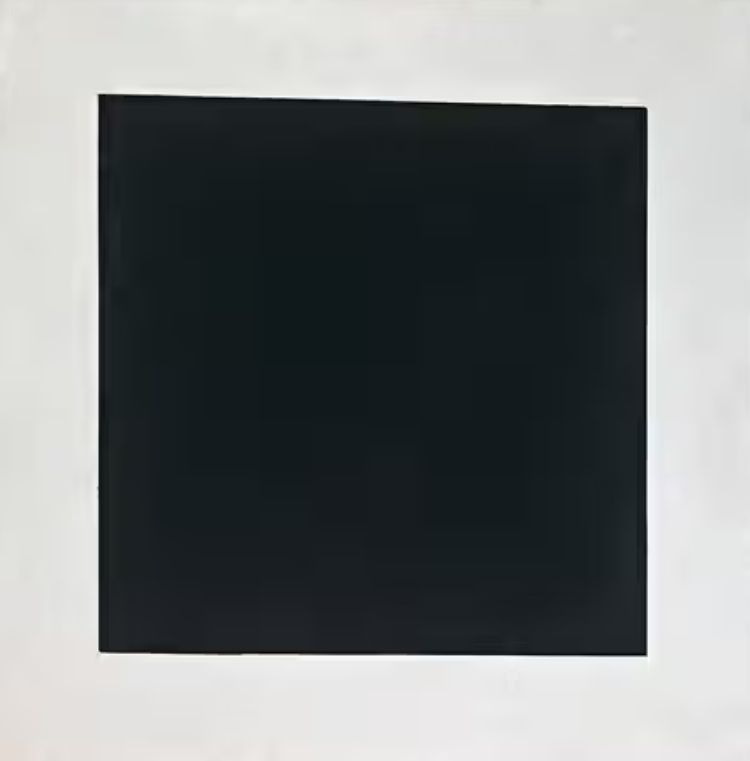
M. Shkandrij again: “There are, of course, other ways of interpreting his artistic evolution. Charlotte Douglas has pointed to a mixture of aesthetic and intellectual influences contributing to the genesis of the first suprematist paintings in 1915. These include Henri Bergson, Umberto Boccioni, and contemporary speculation concerning the fourth dimension (Douglas 1980, 1, 3, 67). Oleksandr Naiden and Dmytro Horbachov have made a case for the artist’s roots in specifically Ukrainian folklore of Yampol county in the Podillia region, where he spent his early years: “Only in 1976 when his autobiography, in which he spoke of his love of the peasantry, appeared in print in Stockholm did it become clear that the closest analogy to his suprematism are the geometrical forms of wall paintings in the homes of Podillia, the pysanky [painted Easter eggs] with their astral signs, the patterns of the plakhta [woven woman’s skirt]—[all of which express] the magical code of universal elements (fire, earth, water). His pictures, in which sharply delineated patterns are scattered on a white background, capture the spirit of folk cosmology. The only difference is that the established order, embodied in the harmony of the peasant ornamental ‘tree of life’ is disturbed, dramatized, and made dynamic in the spirit of the breakneck twentieth century” (Naiden and Horbachov 1993, 221–22).”
